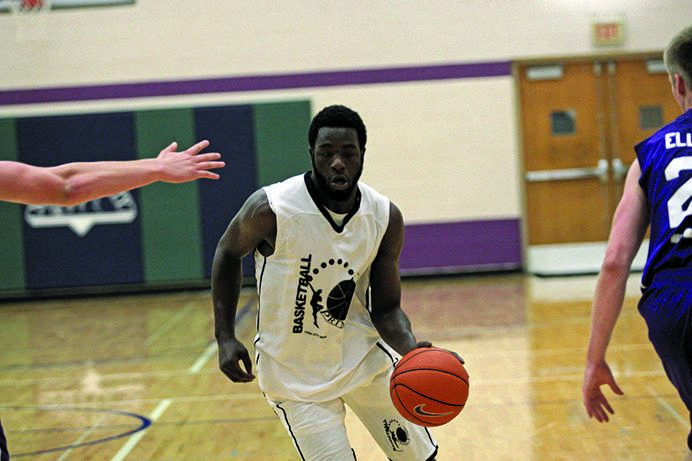The Prime Time League is designed to cultivate competition among the most talented players in the area, Hawkeyes or not. With the 2015 season in the books, these players distinguished themselves as the best of the best.
All-Prime Time Team
Point guard: Dondre Alexander (MVP) is well-known in the area as a former Iowa City West star, and he proved to spectators that he is still, in fact, among the best basketball players the area has to offer. At 6-5 with the build of a football player, Alexander has all the physical tools to dominate. Compared with last summer, however, he showed more matured, refined, and well-rounded skills.
He averaged 21 points, 6 rebounds, and 6 assists as the lead guard for the league runner-up, and he also functioned as his team’s defensive stopper each week. Despite seeming ball-dominant at times, his passing vision justified it, and his shooting percentages don’t appear to have suffered. Shooting 52 percent from the floor and 43 percent from behind the arc, perhaps no single player was more valuable to his team.
As such, I’m awarding Alexander the Derrick Rose-esque MVP. Someone such as Jarrod Uthoff may be a better overall player, but Alexander was most valuable to his team.
Shooting guard: Matt Bohannon lit up the Prime Time League last summer and did an admirable job of living up to expectations in his follow-up season. He led the league in scoring for the second-straight summer with 26.6 points per game and reaffirmed his status as a cold-blooded sharpshooter from the outside. Bohannon attempted 79 3s, the most of any player, and shot 43 percent.
There were other off-guards in play here such as Peter Jok and even freshman Andrew Fleming (best newcomer), but to not recognize Bohannon for his continual torching of the league would be a disservice to him and his ancestors.
Small forward: Paul Jesperson was the unsung hero of the summer; the Northern Iowa forward was one of the most dominant all-around players trapped on a lackluster team. His team went 1-6 and was ousted early, but Jesperson finished second in both scoring at 26 points per game and rebounding with 10.9 a game.
He has one of the better in-out offensive repertoires of anybody in the league; in addition to his magnetic attraction to rebounds, he also shot an exceptional 65 percent on 2-point field goals and 40 percent on more than eight 3-point attempts per game. Jesperson was impressive, but he would have been a main attraction on a different team.
Power forward: Jarrod Uthoff (Defensive Player of the Year). We could have penciled Uthoff in to this spot before the league even started. Fortunately, he lived up to expectations after missing the first two games with a slight ankle tweak.
Standing 6-9 and with what Randy Larson calls “the best pull-up jumper in the Big Ten,” it should come as no surprise that Uthoff scored 17.0 points per game on a very casual 57 percent shooting, 38 percent from the 3 zone, and 92 percent from the charity stripe. He also chipped in 7 rebounds and 3 assists per game.
It should also be noted that with his fluid athleticism and go-go gadget length, he can adequately guard any position on the floor. In fact, while spending a lot of time in the post offensively, his defense on point guard Dondre Alexander was the deciding factor in the championship game. Therefore, he is the Defensive Player of the Year.
Center: Adam Woodbury … he was the only true center in the league, and his averages of 24.9 points and 14.6 rebounds per game would suggest that he was dominant. In a way, I guess he was, but I have to say something.
Woodbury insists that he put on muscle in the off-season, but his tendency to float away from the basket in an Iowa summer league is somewhat alarming. It’s one thing to use the league to work on his midrange game, but it’s another to develop the habit of opting for it rather than posting up. Even in the title game, he was not so much pushed into the midrange but voluntarily camping out there.



